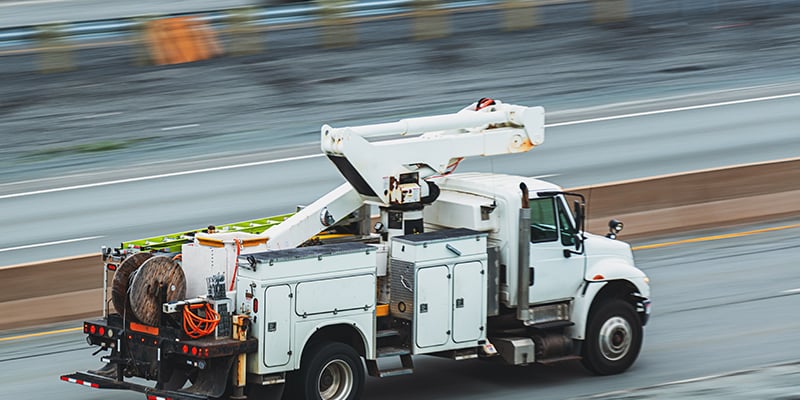Cutting Carbon Emissions One Truck Roll at a Time
Back to Top
The pursuit to create a more sustainable world is causing companies around the globe to explore new methods to reduce their carbon footprint.
Utilities are replacing fossil fuels with clean energy, but there are other sources of emissions to address.
One overlooked cause is the day-to-day operation of fleets of gas- and diesel-powered trucks. Utilities often send these trucks to replace blown fuses on laterals. Overhead laterals are prone to faults because so many of these lines are within the grid. Plus, trees may knock against them, wildlife may chew on them, and severe weather can blow them around.
Truck rolls cost several hundred dollars in fuel and wages. But they also generate an environmental cost. Each truck roll produces approximately 145 pounds of CO2 emissions, according to the U.S. Environmental Protection Agency.
However, a new approach can curtail these expenses. While about 80% of overhead distribution faults occur on laterals, most will clear by themselves. Replacing fuses with fault-testing technology, such as S&C’s TripSaver® II Cutout-Mounted Recloser, prevents temporary problems from becoming sustained outages.
Addressing issues on these lines creates a more reliable and resilient system while also trimming operations and maintenance (O&M) costs. And each avoided truck roll is a step closer to creating a more sustainable grid by eliminating the emissions produced from every trip.
Curb Emissions With Advanced Lateral Protection
Driving toward a low-carbon future is among the key initiatives for British regulator Ofgem. It encourages utilities to find long-term solutions to provide reliable, affordable energy while accelerating the transition to net zero.
National Grid Electricity Distribution (NGED), formerly known as Western Power Distribution, understood how exploring new ways to tackle lateral faults could benefit its customers and contribute to more sustainable operations. NGED became the United Kingdom’s first utility to deploy the TripSaver II recloser.
It aimed to mitigate nuisance outages along its overhead laterals, which were leading to rising repair costs and impacting customer satisfaction. Plus, each truck roll increased the utility’s overall carbon footprint.
After trialing a few devices for a year, the reclosers produced outstanding results:
• Prevented several truck rolls and saved 328 pounds of fossil-fuel emissions
• Cost benefits totaled $319,000 from avoided site visits, reduced interruptions, and fewer customer minutes lost
• Savings translated to an average payback period of roughly two months
NGED plans to install more single-phase reclosers to make further system improvements.
Bigger Is Better
The larger the deployment of TripSaver II reclosers, the greater the impact. Because most overhead lateral faults are temporary, utilities can experience immediate results with each new recloser installation. Benefits add up quickly, especially if crews often travel long distances to reach outage locations.
That was the problem Brazilian utility COPEL experienced. Repairs could take several days because of its extensive distribution system, requiring crews to spend the night on the road to replace a fuse. These truck rolls resulted in a significant amount of wasted fossil-fuel emissions. This affected COPEL’s ability to meet its overall sustainability goals, which called for reducing overall fleet emissions.
After a successful pilot financially justified a greater investment, COPEL went big to improve overall system performance. Within five years, here is what they accomplished:
• Deployed 20,700 TripSaver II reclosers
• Avoided 140,000 truck rolls and the resulting emissions
• Trimmed operating expenses by $25.2 million
The Benefits of Grid Modernization
Modernizing the grid can unlock new ways to reduce emissions and help meet long-term sustainability goals. This includes leveraging existing fleets of trucks as a strategic opportunity to save emissions and advanced lateral protection to avoid trips to the field. Take a big step toward building a cleaner grid through a widescale deployment of these devices.